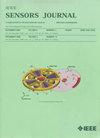Identifying the Respiratory Sound Based on Single-Channel Separation and Hyperdimensional Computing
IF 4.3
2区 综合性期刊
Q1 ENGINEERING, ELECTRICAL & ELECTRONIC
引用次数: 0
Abstract
In intensive care units (ICUs), efficient respiratory management, particularly sputum suction in weakened patients, is critical. Traditional stethoscope-based methods for respiratory sound analysis in tracheal sputum assessment are time-consuming and often struggle to differentiate between cardiac and respiratory sounds, affecting sputum detection accuracy. To address these issues, we propose identifying respiratory sound based on single-channel separation and hyperdimensional computing (IRS-SSHC). Specifically, the proposed method first employs an encoder-decoder framework to effectively separate heart and respiratory sounds in the time domain. Then, it segments respiratory sounds using short-duration energy, where each segment is represented by a 1024-D vector space. Next, it utilizes light gradient boosting machine (LightGBM) based on the vector space for classification. Experimental results show that the classification ACC of IRS-SSHC is 97.9%, which outperforms existing methods.基于单通道分离和超维计算的呼吸声识别
在重症监护病房(icu),有效的呼吸管理,特别是虚弱患者的吸痰是至关重要的。传统的基于听诊器的气管痰液呼吸音分析方法耗时长,而且往往难以区分心音和呼吸音,影响了痰液检测的准确性。为了解决这些问题,我们提出了基于单通道分离和超维计算(IRS-SSHC)的呼吸声识别方法。具体而言,该方法首先采用编码器-解码器框架在时域内有效分离心音和呼吸音。然后,它使用短时间能量分割呼吸声音,其中每个片段由1024-D向量空间表示。其次,利用基于向量空间的光梯度增强机(LightGBM)进行分类。实验结果表明,IRS-SSHC的分类ACC为97.9%,优于现有方法。
本文章由计算机程序翻译,如有差异,请以英文原文为准。
求助全文
约1分钟内获得全文
求助全文
来源期刊

IEEE Sensors Journal
工程技术-工程:电子与电气
CiteScore
7.70
自引率
14.00%
发文量
2058
审稿时长
5.2 months
期刊介绍:
The fields of interest of the IEEE Sensors Journal are the theory, design , fabrication, manufacturing and applications of devices for sensing and transducing physical, chemical and biological phenomena, with emphasis on the electronics and physics aspect of sensors and integrated sensors-actuators. IEEE Sensors Journal deals with the following:
-Sensor Phenomenology, Modelling, and Evaluation
-Sensor Materials, Processing, and Fabrication
-Chemical and Gas Sensors
-Microfluidics and Biosensors
-Optical Sensors
-Physical Sensors: Temperature, Mechanical, Magnetic, and others
-Acoustic and Ultrasonic Sensors
-Sensor Packaging
-Sensor Networks
-Sensor Applications
-Sensor Systems: Signals, Processing, and Interfaces
-Actuators and Sensor Power Systems
-Sensor Signal Processing for high precision and stability (amplification, filtering, linearization, modulation/demodulation) and under harsh conditions (EMC, radiation, humidity, temperature); energy consumption/harvesting
-Sensor Data Processing (soft computing with sensor data, e.g., pattern recognition, machine learning, evolutionary computation; sensor data fusion, processing of wave e.g., electromagnetic and acoustic; and non-wave, e.g., chemical, gravity, particle, thermal, radiative and non-radiative sensor data, detection, estimation and classification based on sensor data)
-Sensors in Industrial Practice
 求助内容:
求助内容: 应助结果提醒方式:
应助结果提醒方式:


